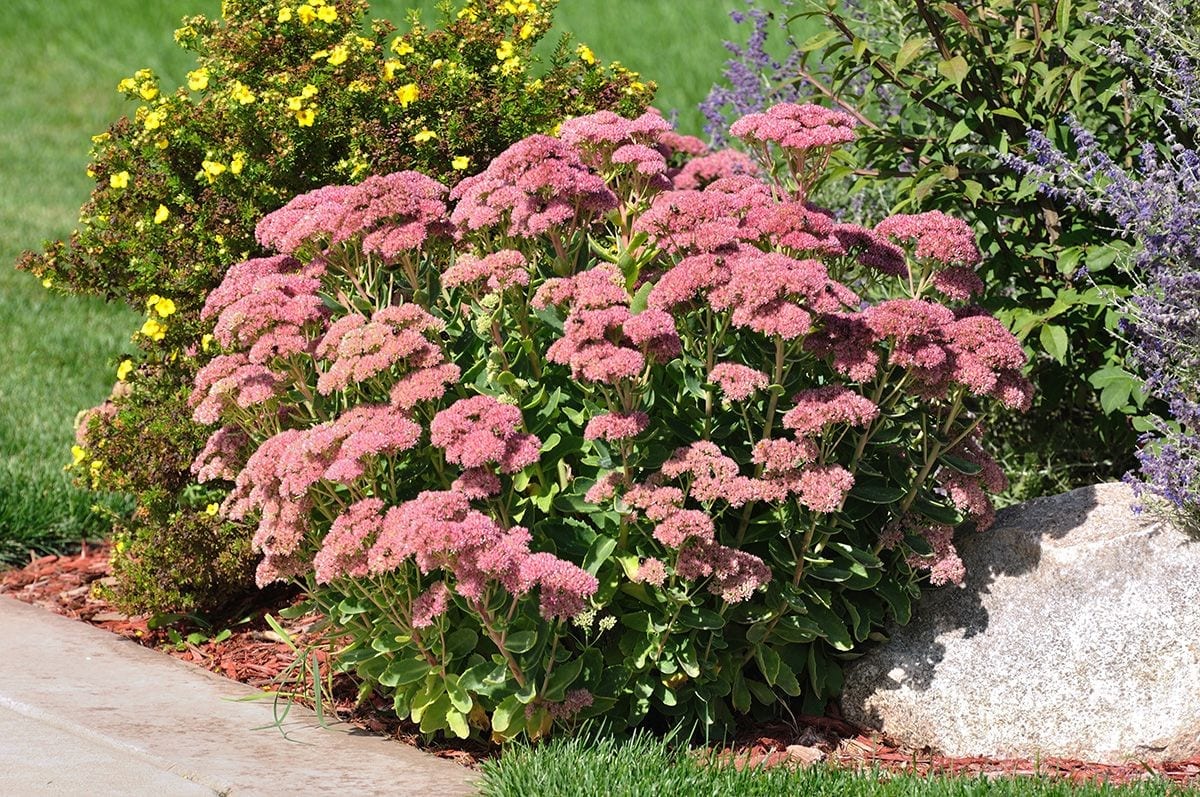Sedums, also known as stonecrops, are a top choice for gardeners looking to create a beautiful landscape with minimal water use. These hardy succulents thrive in hot, dry conditions and bring lasting color and texture to sunny beds, borders, and containers. Whether you’re planting a new garden or updating an existing one, sedums offer structure, resilience, and visual interest all season long.

Autumn Joy Sedum
Why Choose Sedum?
First of all, they are incredibly drought-tolerant once established. Their thick, fleshy leaves store water, making them perfect for dry climates or areas with watering restrictions. Additionally, they are low-maintenance and attract pollinators like bees and butterflies, which help support a healthy ecosystem.
In fact, there’s a sedum for nearly every garden style. From low-growing groundcovers to tall, upright varieties, these plants blend effortlessly into rock gardens, borders, and mixed perennial beds.
Top Sedums to Try
Autumn Joy
One of the most popular upright varieties, ‘Autumn Joy’ delivers months of interest. It forms tidy mounds of blue-green foliage in spring and early summer. Later, large clusters of pink flowers appear and gradually deepen to copper-red in fall. Because of its sturdy stems, this variety stays upright without flopping and pairs well with ornamental grasses and coneflowers.
Creeping Sedums
For groundcover needs try creeping varieties like Sedum ‘Dragon’s Blood,’ ‘Angelina,’ and ‘John Creech’ form dense mats that spread easily across dry soil, slopes, or rock gardens. Not only do they suppress weeds, but they also provide continuous color with their vibrant foliage and star-like blooms. Plus, they’re perfect for planting between stepping stones or spilling over walls.
Tall Sedum
Besides ‘Autumn Joy,’ other tall sedums such as ‘Matrona’ and ‘Thundercloud’ offer bold form and long-lasting blooms. These upright types are especially useful in mixed plantings, adding vertical interest without requiring extra water. Moreover, their blooms last well into fall and make excellent cut flowers.
Tips for Growing Sedum
Above all, sedums prefer full sun and well-drained soil. Overwatering or poor drainage can lead to rot, so be sure to plant them in the right spot. Furthermore, most don’t need fertilizer—too much can cause weak, leggy growth.
In conclusion, sedums are a smart and stylish solution for water-wise gardening. By choosing the right varieties, you can enjoy months of texture, color, and pollinator activity—without the constant need to water.
Additional Information:
